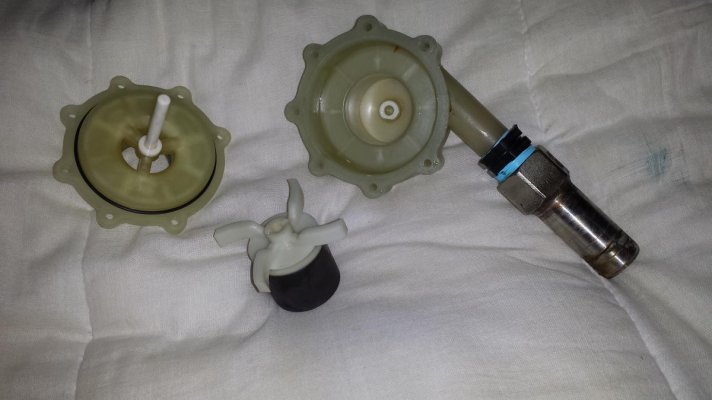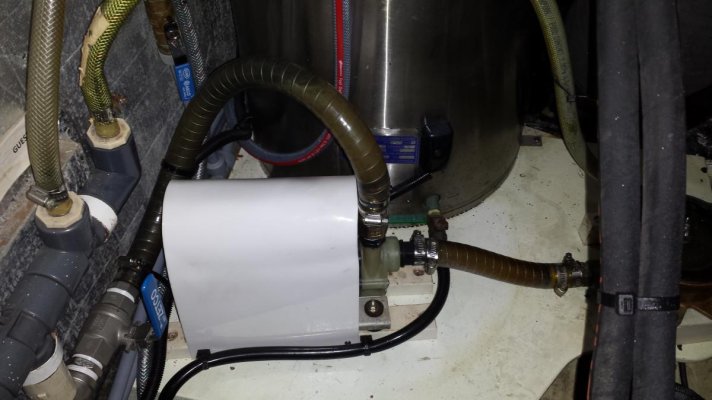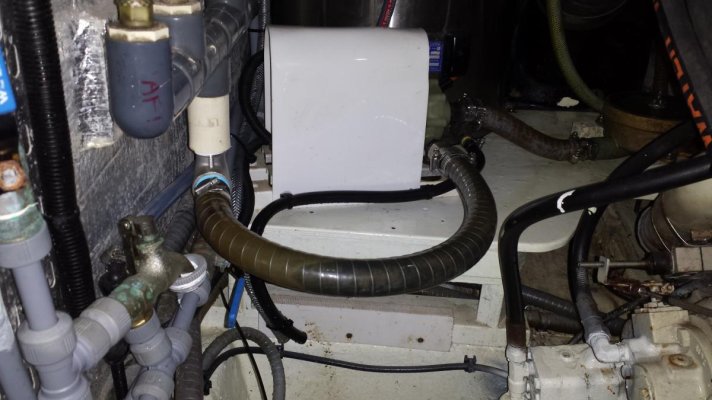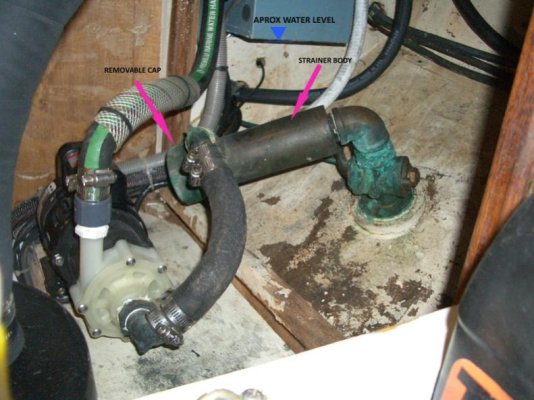I recently moved my March AC-5c-MD/Dometic PMA1000 air con raw water pump....and whether co-incidentally or not, it has now stopped pumping, though it is running. After I re-located the pump I tested it dockside and all appeared to operate normally. I've been out to sea & back since and now, the running-not-pumping problem.
I took off the wet end expecting to find a blockage, broken impeller or heat-distorted plastic...but as you can see from the first photo attached, all looks fine to my (non expert) eye. I am wondering if my new plumbing has created a water lock. The second photo shows the installation and while there is a straight short connection between pump & strainer (and the pump is kept flooded), the hose from the pump out to my air-con distribution manifold is an inverted 'U'. (Pump is under the white spray cover but you can see the wet end to the right and the manifold to the left with the hose loop between.)
What is the verdict by those familiar with these magnetic drive pumps? Is there something wrong with the wet end that I'm not seeing? or is the installation creating an airlock between pump & manifold?
I took off the wet end expecting to find a blockage, broken impeller or heat-distorted plastic...but as you can see from the first photo attached, all looks fine to my (non expert) eye. I am wondering if my new plumbing has created a water lock. The second photo shows the installation and while there is a straight short connection between pump & strainer (and the pump is kept flooded), the hose from the pump out to my air-con distribution manifold is an inverted 'U'. (Pump is under the white spray cover but you can see the wet end to the right and the manifold to the left with the hose loop between.)
What is the verdict by those familiar with these magnetic drive pumps? Is there something wrong with the wet end that I'm not seeing? or is the installation creating an airlock between pump & manifold?




